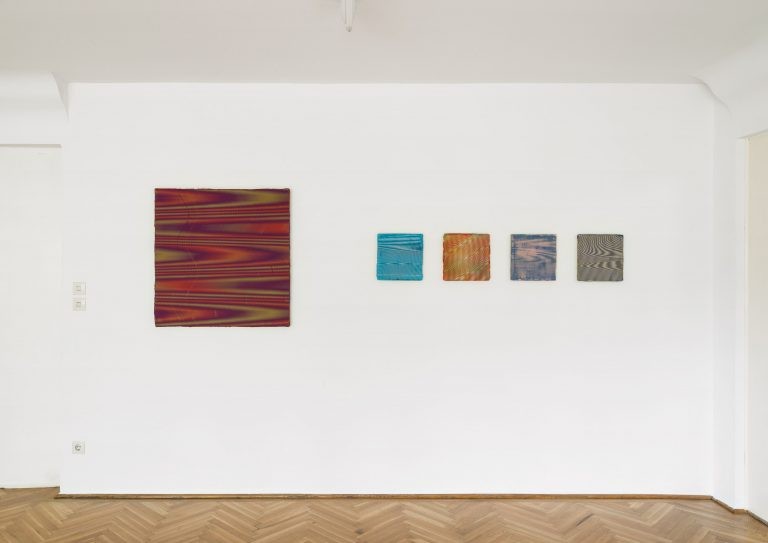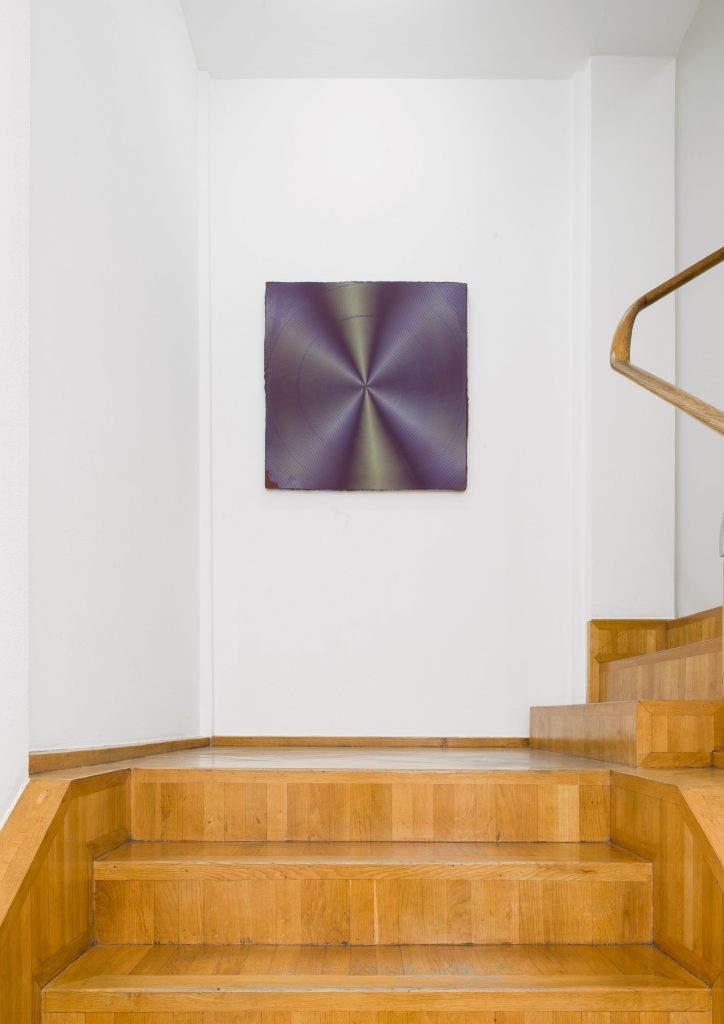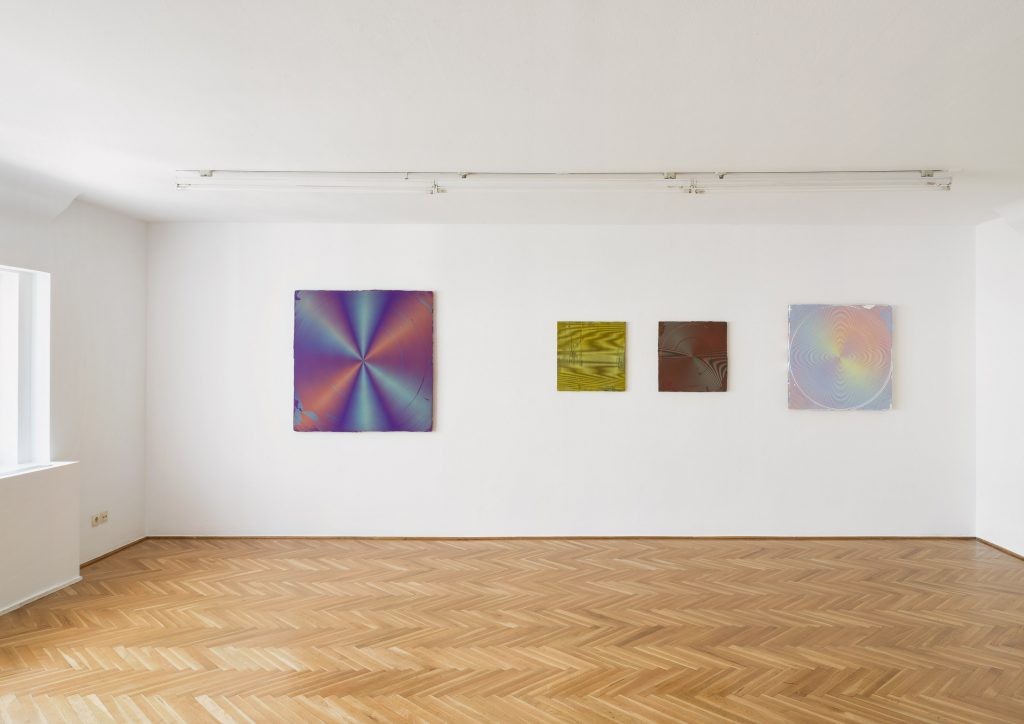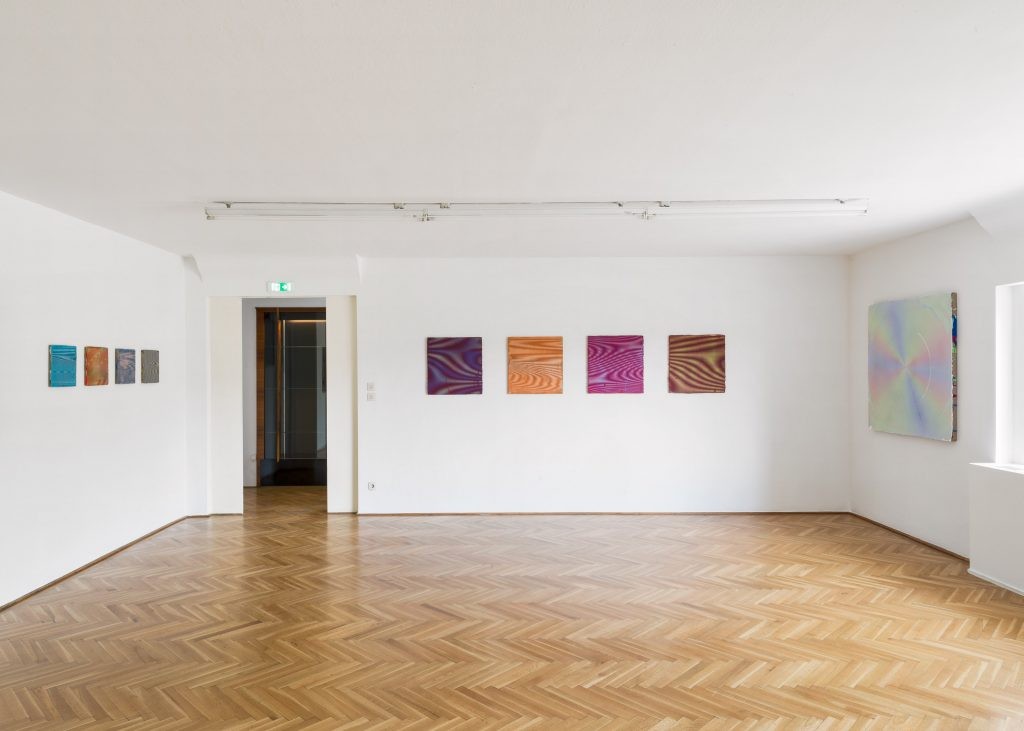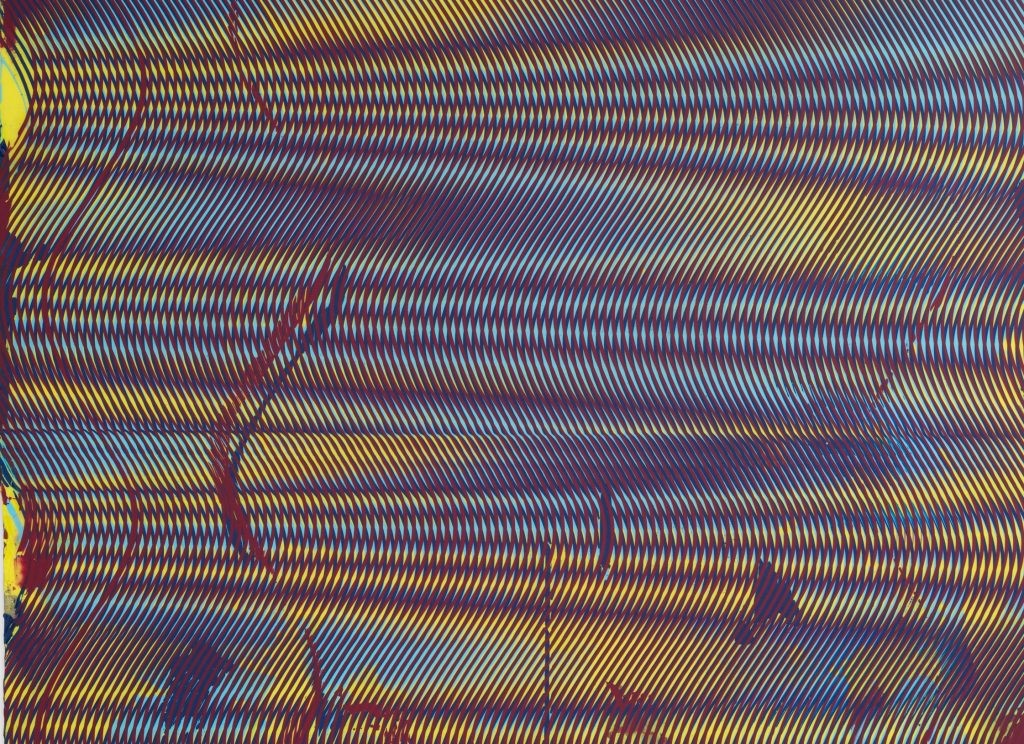Anoka Faruqee
The Visible Spectrum
06 Apr - 25 Jun 2017
ANOKA FARUQEE
The Visible Spectrum
6 April – 25 June 2017
The American artist Anoka Faruqee’s abstract paintings are characterized by pulsating optical and chromatic effects. Patterns and motifs recur in her pictures as she adjusts and permutates them in apparently infinite variations in order to plumb the laws of painting. One of her central aims is to create a tension between atmospheric impressions of light and illusion and the material nature of color and paint.
In her exhibition at the Secession—her first institutional solo show in Europe—Faruqee presents selections from the Moiré Paintings, Circle Paintings, and Wave Paintings series, on which she has worked since 2012. In these works, the artist explores the optical pattern that appears where wave formations or magnetic fields interfere with each other; it can often be observed on computer screens. Critical to her methodical engagement with the phenomenon is that she conceives of pattern not as superficial decoration but as a physical structure built up of modular forms and colors. Her pictures are set apart by their subtly modeled shimmer and dynamic depth. The visually interwoven layers of the pattern are brought to iridescent life by elusive superimpositions of vantage points between movement and rest.
“I am interested,” the artist says, “in how the iteration of modular bits of information, the dissolution of figure and ground, the integration of color and form, and the use of multiple viewpoints and axes of symmetry provide a counter-history to the monocular vision of perspectival drawing and analogue photography.”*
To produce these pictures, Faruqee applies wet paint and then rakes it with notched trowels in more or less controlled movements of the hand. The result is a paradoxical combination of the perfection produced by a carefully monitored creative process and the moments of manual craftsmanship in which faint tremors of the hand and the viscid flow of the paint give rise to imperfections and flaws. The latter, Faruqee argues, are a vital feature of her work:
“Translations between the theoretical and tangible, between the virtual and physical, are central to my work. These would be very different paintings if there were no excess, no errata, or no corruption. These interruptions read simultaneously as painterly gesture, material accident, and electro-magnetic corruption, crucially animating my paintings.”*
*Quotes taken from the essay The Visible Spectrum, to be included in Anoka Faruqee’s artist’s book.
The Visible Spectrum
6 April – 25 June 2017
The American artist Anoka Faruqee’s abstract paintings are characterized by pulsating optical and chromatic effects. Patterns and motifs recur in her pictures as she adjusts and permutates them in apparently infinite variations in order to plumb the laws of painting. One of her central aims is to create a tension between atmospheric impressions of light and illusion and the material nature of color and paint.
In her exhibition at the Secession—her first institutional solo show in Europe—Faruqee presents selections from the Moiré Paintings, Circle Paintings, and Wave Paintings series, on which she has worked since 2012. In these works, the artist explores the optical pattern that appears where wave formations or magnetic fields interfere with each other; it can often be observed on computer screens. Critical to her methodical engagement with the phenomenon is that she conceives of pattern not as superficial decoration but as a physical structure built up of modular forms and colors. Her pictures are set apart by their subtly modeled shimmer and dynamic depth. The visually interwoven layers of the pattern are brought to iridescent life by elusive superimpositions of vantage points between movement and rest.
“I am interested,” the artist says, “in how the iteration of modular bits of information, the dissolution of figure and ground, the integration of color and form, and the use of multiple viewpoints and axes of symmetry provide a counter-history to the monocular vision of perspectival drawing and analogue photography.”*
To produce these pictures, Faruqee applies wet paint and then rakes it with notched trowels in more or less controlled movements of the hand. The result is a paradoxical combination of the perfection produced by a carefully monitored creative process and the moments of manual craftsmanship in which faint tremors of the hand and the viscid flow of the paint give rise to imperfections and flaws. The latter, Faruqee argues, are a vital feature of her work:
“Translations between the theoretical and tangible, between the virtual and physical, are central to my work. These would be very different paintings if there were no excess, no errata, or no corruption. These interruptions read simultaneously as painterly gesture, material accident, and electro-magnetic corruption, crucially animating my paintings.”*
*Quotes taken from the essay The Visible Spectrum, to be included in Anoka Faruqee’s artist’s book.

